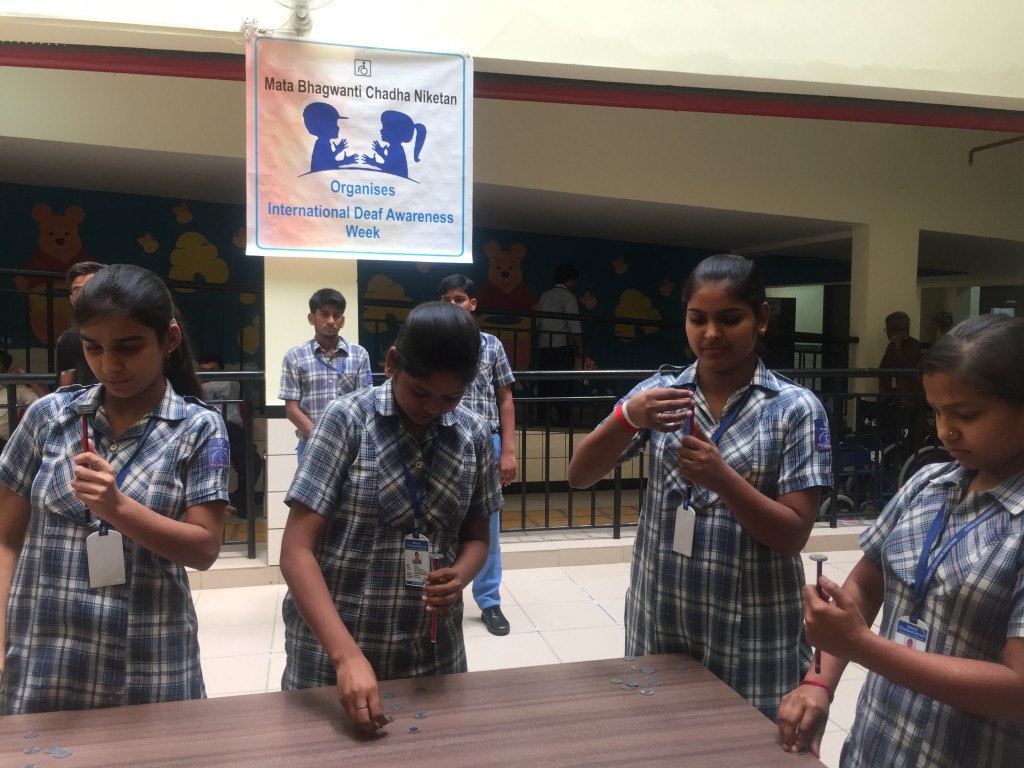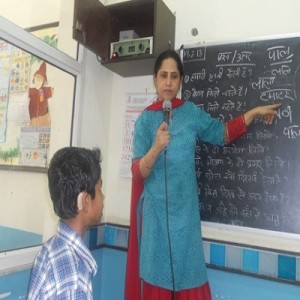Understanding the Needs of a Hearing Impaired Child
Our ears expose us to the wonderful sounds of nature and the ambience surrounding us. We understand things when we hear them. But, when we are unable to receive sounds through ears then it leads to a condition of hearing impairment. Although, there is always a possibility to amplify sounds with the use of a hearing aid in various conditions. However, if the hearing loss is found to be severe, a person develops an inability to distinguish sounds. Still, students who are hard of hearing can comprehend audio information by supplementing their properly working senses with listening devices.
When a person is repeatedly exposed to loud noises, there are signs to watch out for. For instance, when a special child starts facing difficulty in listening to other people clearly or often misunderstands their words. Such children expect others to repeat themselves and they tend to watch television or listen to music at a volume higher than what is required.
Types of Impairments
Hearing impairment is generally found in four types. The first one is called ‘Conductive’ which is a result of obstructions in the middle or outer ear affecting all the frequencies of hearing. This kind of loss can be corrected by the use of a hearing aid. Come to another type, ‘Sensorineural’ that is caused if any damage happens to the inner side of ear.
The loss can go up to being profound and may affect certain frequencies to a greater extent. Sounds may often come off as distorted even after using a hearing aid. Hearing aids enhance the capacity of a differently-abled child to communicate and hear with the use of digital hearing aids or bone-anchored implants. Depending upon the extent of severity, middle ear and cochlear implants are also advised and sign language is taught.
Then, there is a mixed kind of hearing loss that is caused due to problems occurring in both the middle and inner ear. Last but not the least, comes ‘Central’ that is caused when the damage extends to the person’s central nervous system. For hearing impaired children, communication is mightier than sword. They interact with people through a variety of communication methods. These methods include the sign language, finger spelling, lip-reading, written and oral communication which they pick up at special schools meant for them.
Coming to the Visual Aid
Educators make special considerations while teaching such children in their class. Much of these come from the common sense that prevails while working in collaboration with an affected student, his/her family as well as the speech and language expert. Apart from depending upon the constructive criticism from a differently-abled child and his/her family, teachers emphasize upon using the visual aids to reinforce the available auditory information. Keeping the environmental noise to the minimum level inside a classroom also restricts any kind of interference to occur with the listening devices.
But the most important of all the efforts to tend to a child suffering from a hearing loss is to be more verbal and expressive to him/her and maintain continuous eye contact while talking. Face-to-face interactions help the special child to read the lips and talk directly to the person trying to strike a conversation with him/her. While communicating with children, it is necessary to keep in mind that one utters complete sentences. It can help them brush up their linguistic skills which is a key to their academic development.
Talking Through Signs
Being expressive, giving an effective speech and putting up demonstrations is appreciable while talking to the deaf. Being a qualified sign language expert is an icing on the cake. Shouting in front of a special child is obviously not allowed as usage of hearing aids can make sounds louder but not normal.
If an oral speech, sign language, finger spelling, gestures or lip reading fail, then we can still communicate to these children through writing. Apart from this, a semicircle sitting arrangement could be preferable for a child suffering from hearing loss in group gatherings. This gives them access to all the members in their peer group and the setting is more beneficial if an interpreter or visual aids are arranged.
The extent of success while communicating with a deaf child depends upon observing his/her body language or facial expressions. If there is any trouble in understanding the parts of speech of a differently-abled student, he/she can be asked to repeat. The willingness to understand them and the desire to communicate with them helps the people to be at ease with such students.
It is a widely welcomed move to lend a helping hand to a child suffering from hearing loss as the impairment proves to be a hindrance in the overall development of a child. The earlier this loss occurs, the more serious are its effects. In the same manner, the earlier it is identified and the interventions are underway, lesser serious are its probable threats.
A special child is always a visual learner. Therefore, educators can be encouraged to use graphics, pictures and text labels more extensively into teaching. The bottom line is that students not just at the special schools for deaf in India but those being taught in a normal classroom setting should also get an ideal atmosphere to prosper and flourish. Special educators only need to build a habitat for the deaf that can be conducive to their situation and help them avoid the life of a recluse.
Acting in this regard, the WaveRiders of Ponty Chadha Foundation (PCF) decided to make an effort to educate and empower the hearing impaired kids at their special school for deaf children, Mata Bhagwanti Chadha Niketan (MBCN) that was set up with a motto to brighten lives.












